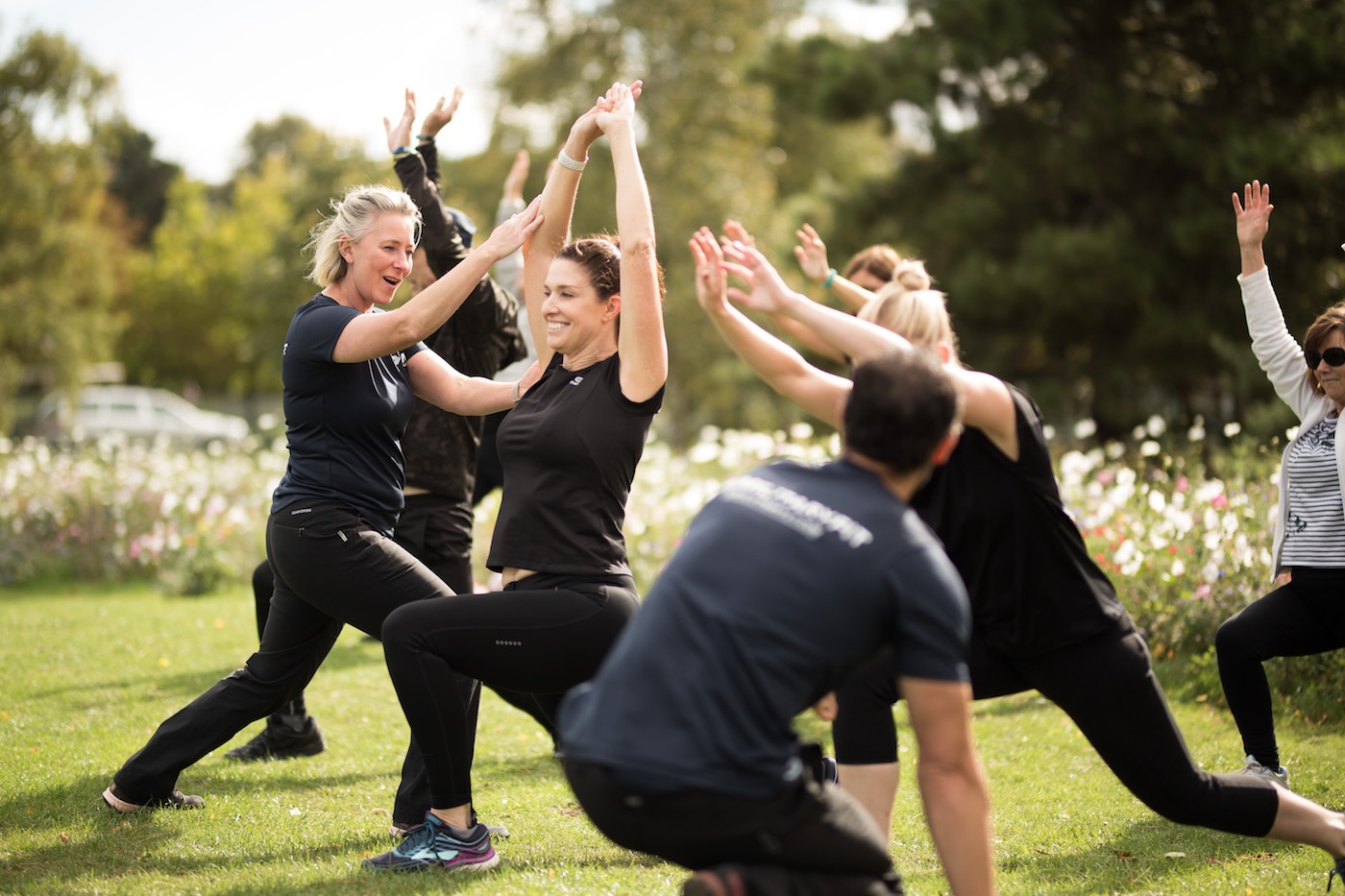
Your Ultimate Guide to Walking for Fitness and Weight Loss
October 8, 2018
Topics:
Over 2000 years ago, Hippocrates said: “Walking is a man’s best medicine,” and we reckon he might just have been onto something.
Here's a look at why walking might be the exercise fix that's been staring you right in the face.
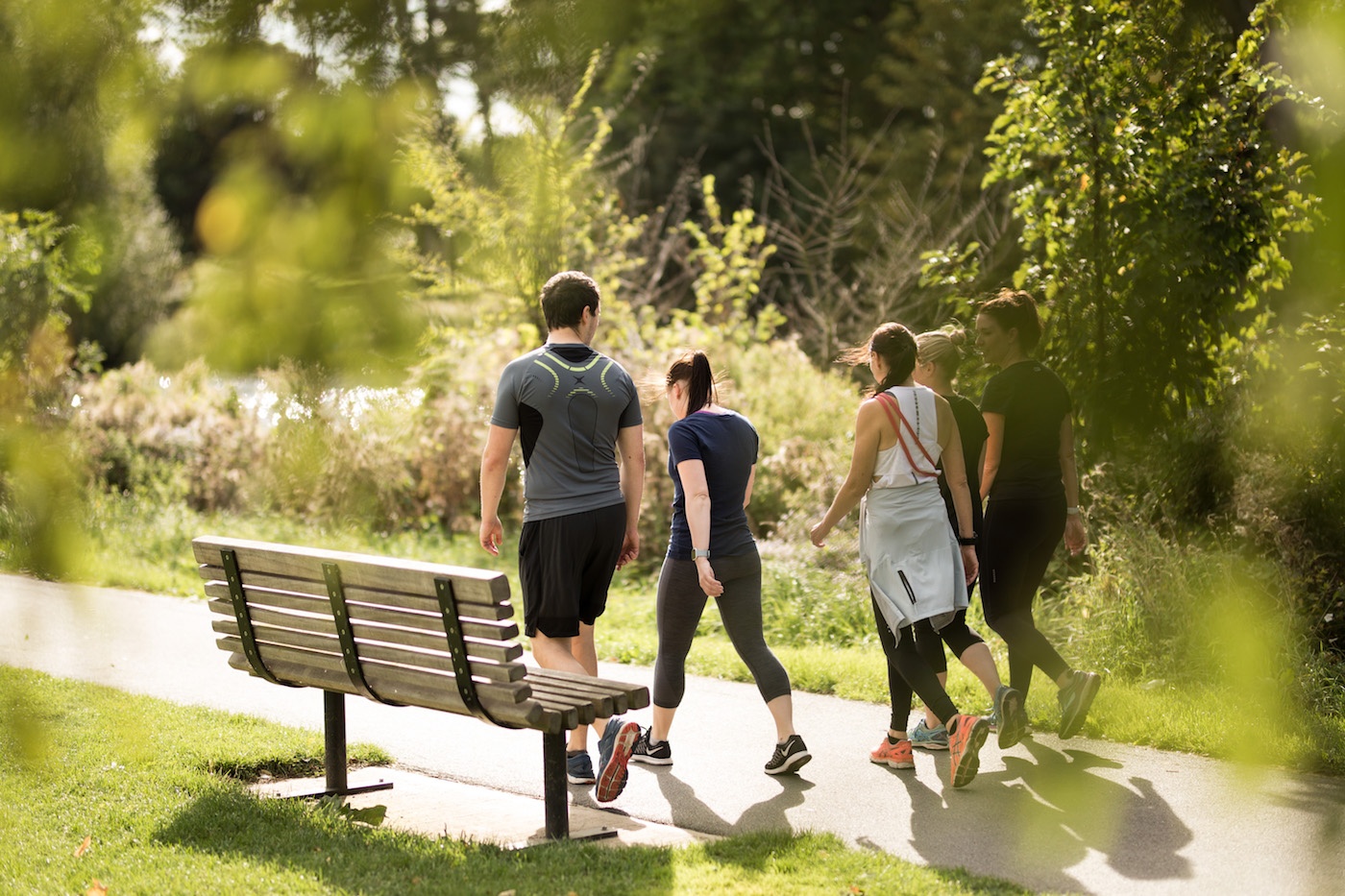
It’s something most of us have been doing almost unthinkingly for almost 4 million years. A pre-historic gift given to us as homo-sapiens but one that we barely pay attention to, serving simply as a means of getting us from A to B.
But have you ever considered that our wonderful bi-pedal ability might actually be the exercise solution you've been waiting for?
Walking is one of the simplest and safest ways you can get moving, get fit, lose weight and prevent injury. And the best part is: you can do it anywhere, at any time.
So it’s time to grab your trainers and get walking!
Try a free ACTIVE by BMF workout near you now.
How many calories does walking burn?
The number of calories you burn when you walk depends on two main factors:
- your weight
- the distance.
Speed has a fairly marginal impact so focus more on distance than pace.
A good rule of thumb is that about 100 calories per mile are burned for a 80kg person and 65 calories per mile are burned for a 55kg person. So, if you 55kg, a 2-mile walk will burn 130 calories.
If you want to get more specific, this helpful post from VeryWellFit has some charts which will help you to work out how many calories you personally burn when you’re walking. Once you have a rough idea of your individual calorie burn, you’ll be able to use this as a benchmark every time you hit the pavement – no need for fancy fitness trackers!
Our ACTIVE by BMF classes are designed to get your heart pumping and calories burning with a mix of brisk walking and low-impact body weight exercises.
Sound like a bit of you? Find an ACTIVE by BMF class near you and sign up for a free trial now.
Walking for fitness
Not only is it far less sweaty than the cardio poster-boys running and cycling, walking can absolutely still help you achieve your fitness goals. In fact the NBC rated walking earlier this year as the most underrated form of exercise!
Walking gets your heart working but without putting undue stress on the cardiovascular system; reducing the likelihood of cardiovascular “events” (such as angina or heart attack)
A study by The Telegraph showed that pensioners who spend just half an hour a walking can reduce their risk of a fatal heart attack by more than half.
Walking Vs Running
There’s no denying that running is a more physically demanding workout. When you run, you place your body under a large amount of physical stress, causing you to recruit more muscles, burn more calories and place more demand on your heart to keep up.
This inevitably leads people to label running as a better workout, but exercise physiologist John Ford says the two exercise types shouldn’t really be compared side by side. Rather, he says that walking may simply be a better exercise option for a LOT of people.
One of the main reasons is the risk of injury associated with running. When we run our body hits the ground with a force equal to three times our body weight. It’s no wonder that the risk of exercise-related injuries for runners is 20% - 70%, compared to walkers at just 1% - 5%.
So, while it will take longer to clock up the same miles and calories as running, when it comes to overall effectiveness, safety and longevity, walking is our clear winner!
If you’re serious about building your fitness (and, if we’re straight talking about it, improving life expectancy), there are a few different kinds of walking to consider:
Different kinds of fitness walking:
As well as simply hitting the streets or your local park for a stroll, there are some specific kinds of walking that you can think about if you’re serious about getting fitness results:
-
Treadmill walking
If you’re a member of a gym or have a treadmill at home, this can be a great way to get in your walking fix if the weather is against you.
Physiologist, life-long track athlete and walking advocate John Ford says there are ways to get creative walking on a treadmill that don’t mean hours of endless, boring plodding.
Check out some of his treadmill walking variations in this blog post.
-
Nordic walking
Nordic walking utilises two walking poles to transform walking into a full body workout. There’s a lot more to this niche fitness activity than meets the eye – learn more about Nordic walking here.
-
Outdoor walking groups
Local walking groups are popping up all over the UK and can be a great way to meet new people or just to plan as a fun activity with your friends. Ramblers is the biggest of the national organisations; bringing together walkers from all over the country. You can find existing walking groups, log and track your new walks and discover some of Britain’s best routes.
-
ACTIVE by BMF
ACTIVE by BMF is the walking version of the classic MILITARY FIT by BMF class. The outdoor workouts mix brisk walking with low-impact bodyweight exercises to keep your heart healthy.
And unlike the slightly sweatier BMF classes, you’re allowed a bit of 'Talkfit' at ACTIVE by BMF, so it’s a social occasion too!
Check out this clip which gives you an idea of what to expect from your first ACTIVE by BMF class:
Ready to get your marching boots on and start making some walking fitness gains? Find an ACTIVE by BMF class near you and sign up your very first class free right now.
A little or a lot? The choice is yours!
The beauty of walking is that you can approach it as seriously or as casually as you want to; it all comes down to your personal goals. Maybe you simply want to get moving a little more. Or maybe you’ve got a specific fitness, health or weight loss goal in mind.
If you’re taking things slowly, just starting to keep count of your steps and adding little bits of extra walking wherever you can into your day is the perfect place to start.
If you’re serious about pushing your fitness level and have a weight loss goal you’re working towards, then joining a walking group or low-impact fitness group such as ACTIVE by BMF can be a great way to keep you motivated and accountable and give you milestones to work towards, whether it’s covering more distance each week or working towards a charity event.
If you are working towards an endurance walking event or tackling one of the big national walks, ACTIVE by BMF classes can help get you prepared. Find an ACTIVE by BMF class near you and sign up for a free trial now.
Get counting
Counting your daily steps and giving yourself a step target will make you extra motivated to walk places instead of taking an easier option.
There are thousands of different fitness trackers and pedometers on the market, or if you have a smart phone there is usually a health or heart tracking app already installed.
You’ll be surprised at how easy it is to stack up the steps once you’re inspired to keep count, and find new routes to get between places by foot.
Walking Tips
Walking is something that comes pretty naturally to most of us and doesn’t require any complex training or technique. However, there are a couple of key points to be mindful of in order to get the most out of your walking training:
Position
Perfecting your position and posture will optimise the way you walk. This article from sports scientist Joanna Hall gives the low-down on how to achieve the perfect walking posture and stride.
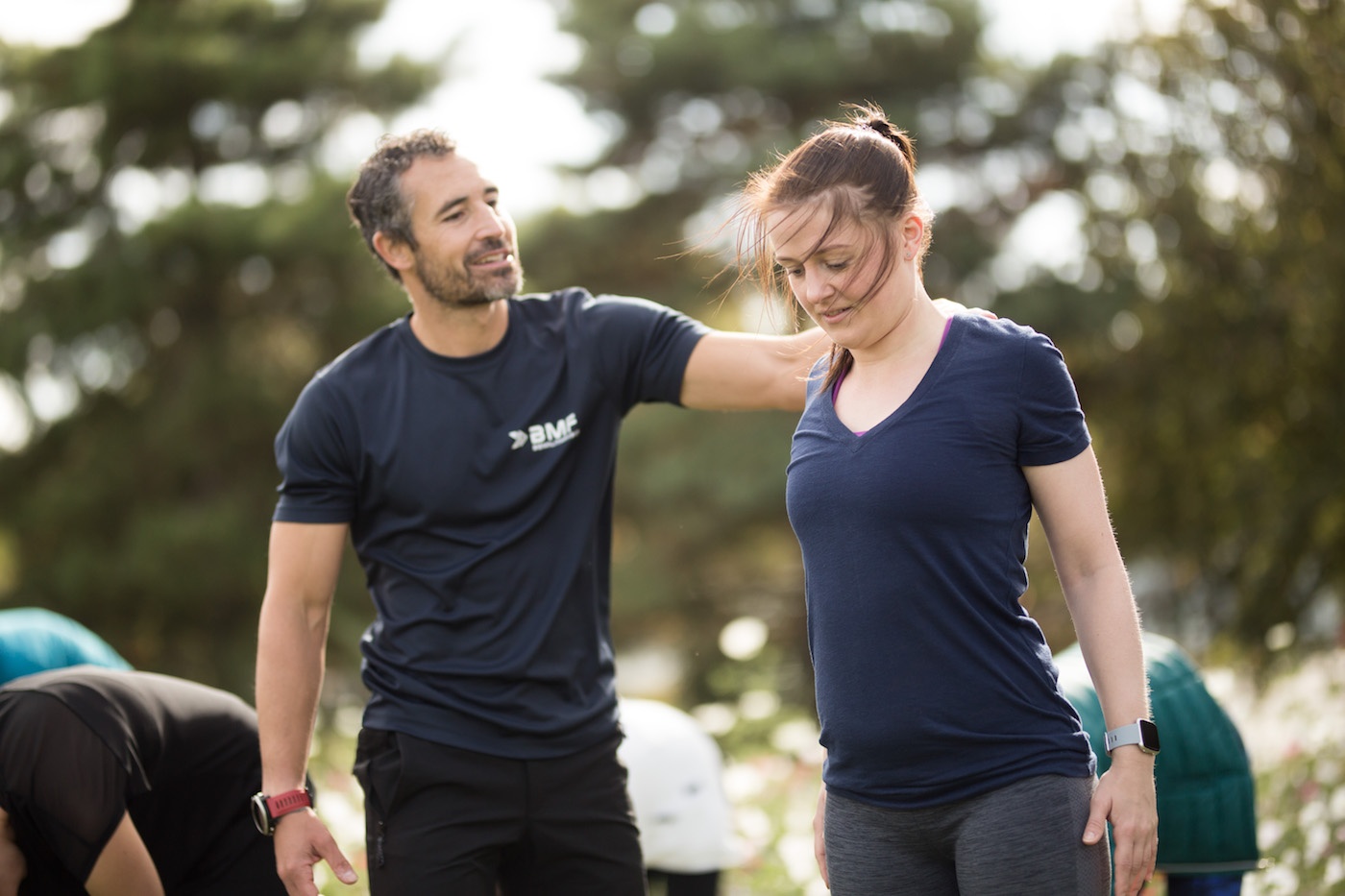
Shoes
Because walking is low impact, your shoes will last longer, and don’t need to be as high-tech as if you were running. Check out this Guardian article for practical pointers on selecting the perfect pair of marching boots.
What are the Benefits of Walking?
The benefits of exercise go far beyond simply increasing fitness. Exercise addresses and improves a whole raft of other mental, emotional, social and health benefits that sometimes don’t get the airtime they deserve.
Aside from the great cardiovascular and endurance benefits we now know we can get from walking, here are a few of the lesser know upsides to getting your marching boots on:
-
It’s social
Walking might just be one of the only exercise activities where you can catch up, gossip, and even solve the world’s problems while you do it. And because going for a walk is such an accessible and achievable task for most, you can rope in just about anyone to join you.
Long-time ACTIVE by BMFter, Karen King, who has been coming to classes since they began in 2009, says the social aspect is undoubtedly what keeps her hooked.
“Everybody is so relaxed and chatty. We call it Talkfit and Laughfit! We’re often too busy laughing to notice how hard we’re working.”
Read the rest of Karen’s story here.
-
It makes you happy!
It’s well known that exercise in general is great for giving you happy endorphins and improving your mood – and walking is no different.
An interesting study showed that even the most mundane of walks left participants who did an outdoor walking tour of a university campus with much more “robust happiness levels” than their unlucky counterparts who completed the tour via a video screen!
Read more about the study in this Telegraph article.
Other researched mental health benefits associated with regular walking include decreased anxiety, increased creativity, joviality, attentiveness and self-confidence… the list goes on!
Jenny Hastings, wife of rugby legend turned commentator Scott Hastings, has spoken publicly about how exercise, including ACTIVE by BMF classes, has helped in her battle with depression.
See Jenny’s brave story here.
-
It gets your creative juices flowing
One study from Stanford University examined the effect of walking on creative output and found that it increased up to 60%! Researchers agree that engaging in activities that encourage our minds to wonder promotes a mental state conducive to innovative ideas and “ah-ha!” moments. So next time you’re at a dead-end with a brainstorm or have writers block, hit the local park for a few laps!
-
It’s affordable
Unlike other activities and sports that require equipment and special gear, the kit needed for walking is pretty low-spec. All you really need is a decent pair of trainers, some comfortable shorts or joggers and you’re set. Talk about low-investment!
-
It’s convenient
The great thing about walking is that it can act as a mode of transport, without getting you overly hot and sweaty, so unlike running to work or to meet friends, a walk doesn’t require a shower and entire outfit change. Plus you save the bus fare. Win-win!
-
It’s low impact
While walking might not have all the sweaty glamour of running, the fact that it is low-impact means it is much safer and more sustainable long-term. Check out our section below for the low-down on low-impact exercise.
The list of benefits from walking goes on and on, but if you need yet another list of surprising and unexpected benefits of walking, we like this list from Harvard Medical School.
Have we sold you on the benefits of walking yet? If you need more convincing check out our extended list of benefits here.
Or if you’re ready to get cracking, sign up to your free trial class right now.
Take your chances
Be an opportunistic walker:
- Take the stairs instead of the escalator.
- Walk to the shops instead of driving.
- Grab a friend and take a stroll around the block for your afternoon break at work instead of sitting in the staff kitchen.
Chances to walk can be found in hundreds of tiny moments of everyday life, and the more you start looking out for them the more you’ll start noticing the opportunities you’d perhaps previously missed or overlooked.
Will walking improve my health?
A report last yearfrom Public Health England raised concerns around the health of the UK’s middle-age population.
In particular the statistic that 41% of middle-aged adults (aged 40 – 60) don’t manage even one brisk 10-minute walk a month. When coupled with the fact that 1 in 6 deaths in the UK are linked to inactivity of some kind, it makes for a pretty compelling argument to get moving.
Brisk walking is one of the forms of moderate exercise now recommended by the NHS to reach your advised weekly quota of 150 minutes.
In fact, PHE says just one brisk walk a day is enough to cut your risk of early death by 15%.
The following are all additional benefits you can expect to see to your overall health simply by adding walking in to your weekly activity:
Walking Improves Cardiac Health
A huge study of almost 50,000 walkers and runners, aged 18 – 80, over a period of six years showed walking actually had more impact on cardiac health than running.
The study participants who walked as their main exercise reduced their risk of heart disease by 9.3%, versus the runners, who also reduced theirs too, but only by 4.5%.
Walking Reduces Blood Pressure & Cholesterol
Results from the same study as above showed that walking reduced the risk of first-time high blood pressure by 7.2%, while running reduced it by 4.2%. The results were similar for high cholesterol risk reduction, with 7% for the walkers and 4.3% for the runners.
Walking Prevents Weight Gain
When it comes to fighting weight gain, the temptation can often be to think “the more intense the better”. In actual fact, according to a study by the London School of Economics, moderate intensity exercise, such as walking, may actually be more effective for battling the bulge than going to the gym.
The study found that those who engaged in regular brisk walking had a lower Body Mass Index and smaller waistlines than those that did other fitness activities such as playing team sports or going to the gym.
Walking Reduces Risk of Cancer
Two different studies of patients with bowel cancer and breast cancer showed that those who added on average 25 minutes a day of walking into their routine were only half as likely to die from the disease as those who didn’t walk.
The list of benefits to overall health from walking is almost endless…. And the best way to start experiencing them for yourself is to stop reading and START STEPPING.
Get started right now by signing up to a free ACTIVE by BMF trial class near you.
Walking improves Mental health
A Canadian study in 2017 showed that adults suffering from vascular cognitive impairment (a pre-cursor to dementia) who took regular brisk strolls throughout the week improved their brain function considerably.
The research also suggested that regular walks could diminish the chance of someone developing vascular cognitive impairment in the first place.
Walking is Low Impact Fitness
Exercise these days seems to all about high-intensity, with gyms and exercisers around the globe embracing the “harder the better” philosophy.
But it doesn’t have to be all about throwing yourself about violently, desperately trying to pack as much punch into as short a time as possible.
Low impact exercise is the tortoise to the high-intensity hare, boasting many of the same health and fitness benefits without putting your muscles and joints through the wringer.
But what exactly is low-impact exercise?
Don’t be fooled by the name. Low-impact exercise definitely doesn’t mean “easier” or “less effective”. Low-impact exercise simply means any fitness activities that don’t place direct force or impact on the body. More specifically, it is any weight-bearing activity that involves having at least one foot on the ground at all times – so excludes jumping, running and other explosive plyometric movements.
Swimming, cycling, rowing, types of dancing, yoga and walking, are all common and popular examples of low-impact exercise that are still super effective.
In fact research from the NHS suggests that moderate or low-impact activity is just as effective as high-impact activity when it comes to lowering the risk of heart disease.
Getting started with low-impact exercise
If you’ve been off the exercise grid for a while or you’re just getting started on your fitness journey, starting out with a low-impact activity such as one of those listed above is a great, safe option that will still get you great results while reducing your risk of getting injured or burnt out.
The most important thing at the beginning of any new exercise plan is to stay consistent, and make small, steady steps.
So, while you might be full of high-intensity enthusiasm for your new-found fitness routine, taking things slowly and avoiding injury is actually going to get you the best results long term. It might not sound sexy, but it works!
BMF ACTIVE by BMF classes are fun, low-impact outdoor workouts that will get your heart pumping and your body burning calories. Find a class near you and sign up for your free trial here.
Low-impact fitness classes
If you’re new to fitness, starting out with group workouts or classes is a great way to stay motivated, make friends, and learn correct technique from a knowledgeable instructor.
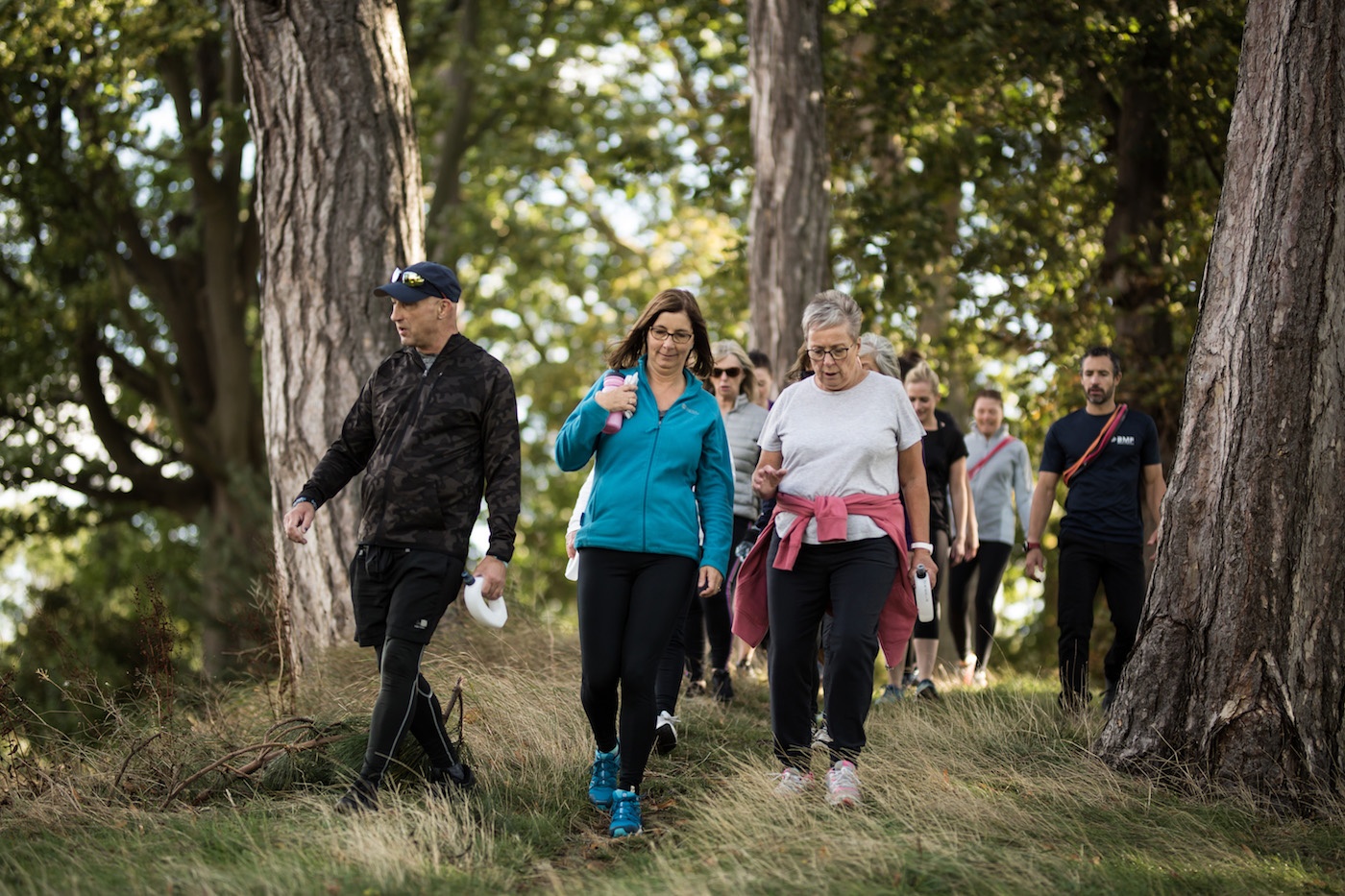
However, if you’ve never done the class before, it can be difficult to know what lies in store for you beyond those studio doors. Often the thought of feeling out-of-our depth, embarrassed, or not fit enough for the workout can be totally intimidating, and enough to send us running straight back to the comfort of the couch.
So, if punching, kicking and thrashing your limbs into a sweaty oblivion is not your cup of tea, the good news is there are low-impact, less strenuous options.
Below are some of our favourites:
Cycling
Cycling is one of the best low-impact workouts you can do. No bike? No problem! There are literally thousands of spin classes available at gyms throughout the country which usually have decent instructors and great music to keep you motivated.
You can search for a spin class at a gym near you using class finder.
Walking
As we’ve already covered, walking may just be the most versatile and convenient fitness option on the planet. British Military Fitness runs ACTIVE by BMF sessions in outdoor parks around the UK every week.
The sessions are led by trained British Military Fitness instructors (do not let the military aspect deter you, the ACTIVE by BMF instructors are particularly gentle!), who deliver entertaining and fun exercise classes that’re achievable for all age groups and fitness levels.
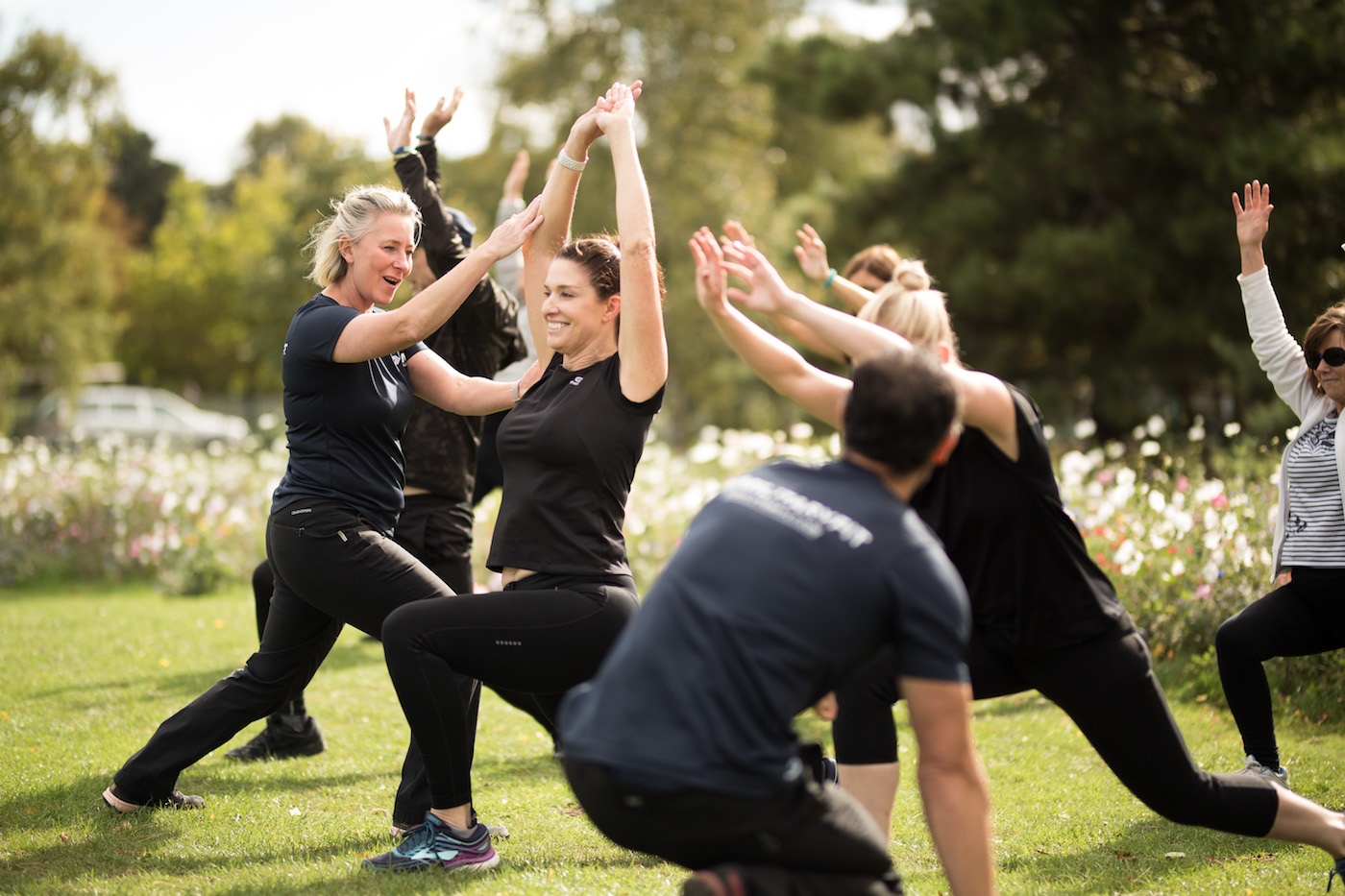
Find an outdoor ACTIVE by BMF session near you and sign up for your free trial now.
Swimming
If you have access to a pool or beach, swimming is one of the best low-impact exercises you can do. It builds endurance, cardiovascular capacity, and strengthens and tones your muscles.
If the thought of doing endless laps leaves you a bit cold, then swimming or aqua classes are a great alternative. These usually involve similar exercises to what you’d find in a “dry” aerobics class but with the added resistance (and fun!) of being in the water.
Most local council pools and gyms with pool facilities offer classes and Just Swim has a useful class finder to help you find one near you.
Can walking help me lose weight?
If weight loss is your goal, then walking is a great place to start.
When you factor in the calories burned, the low-impact nature of the exercise and its accessibility and convenience, walking nears the top of the list when it comes to achievable and sustainable weight-loss techniques.
Losing weight, or more specifically losing fat, (which is what most us want), comes down to a simple equation of calories in vs calories out, so upping your weekly calorie burn by adding regular walks wherever you can, as well as dedicated exercise-sessions of walking, will all contribute to your overall weight loss.
Even a couple of miles could burn 200 calories or more (depending on your weight). Do that a few times a week and you’ve clocked up an extra few thousand calories burned for the month!
Regular ACTIVE by BMF member Caroline, 56, uses the classes to maintain her already impressive three-stone weight loss.
Read Caroline’s story here.

